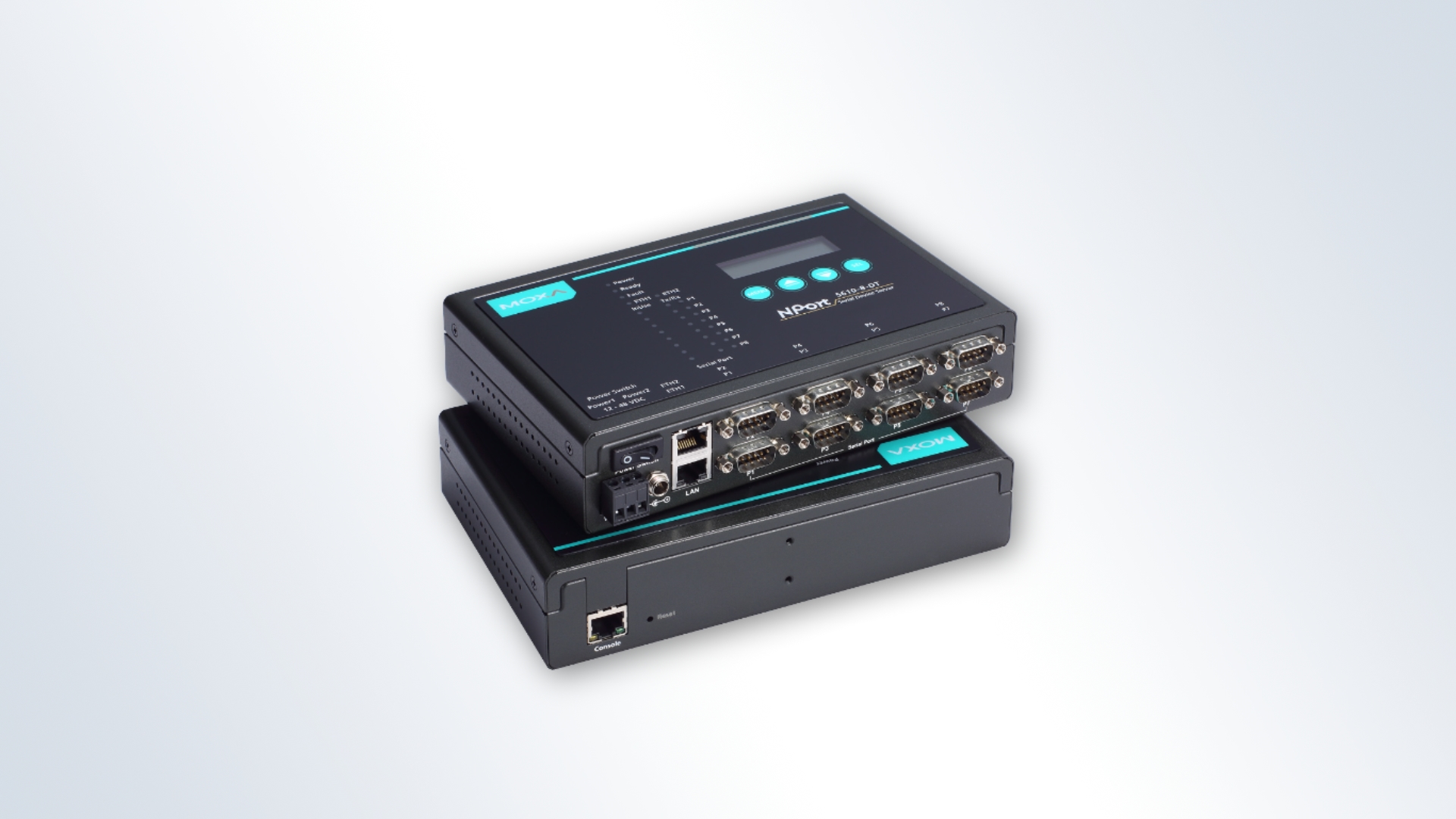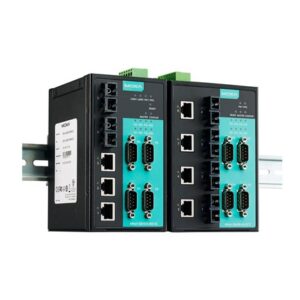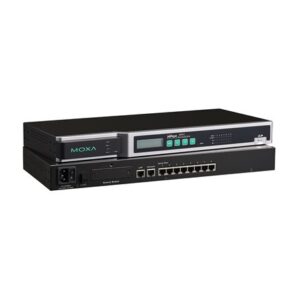Short answer: Serial Device Servers convert Serial Standards (RS-232, RS-422, RS-485) to Ethernet (copper or fiber) and vice versa. The rest of this article is the long answer.
If you are not familiar with Serial Standards, how they work, and why we still use them in the 21st century, we recommend opening this article in a second tab, reading it first, and then coming back here. That way you will get the bigger picture.
Serial-to-Ethernet: What is a Serial Device Server
Even though serial interfaces have proven themselves as amazingly reliable, they are clearly considered “legacy” today. Modern computers rarely come with COM-ports anymore, and by default, you can’t directly connect serial devices to network switches or Ethernet ports. The maximum speed of serial interfaces isn’t even close to 100 Mbps, and they don’t support modern technologies like redundancy protocols, SNMP monitoring, or direct cloud connectivity.
This situation brings us to a crossroads. On one hand, there are still millions of serial devices operating reliably across industries worldwide. On the other hand, the modern trend is unstoppable: everything is moving toward Cloud integration and Industrial IoT (IIoT) connectivity. This is exactly where Serial Device Servers come into play.
These are simple devices that have a serial port on one side and an Ethernet port on the other. Their main job is straightforward: to encapsulate serial data into IP packets (typically using TCP or UDP), allowing serial devices to join modern Ethernet networks. Some models are dedicated to a specific standard like RS-232, while others are universal, supporting RS-232/422/485 on the same device. They can be just palm-sized, or large rackmount units supporting up to 32 serial ports.
But the real strength of Serial Device Servers is not just in simple signal conversion. They offer a variety of operational modes that make integration easier without replacing legacy systems. For example, in Real COM mode, a special driver installed on a computer creates a virtual COM-port. From the software’s perspective, it still appears to be communicating with a local serial port — even though the actual communication is happening over Ethernet. Other modes include TCP Server, TCP Client, Pair Connection, Ethernet Modem, and it’s not even a full list.
Many modern models also add encryption and cybersecurity features to protect data in transit, meeting the demands of modern industrial networks.
Key Benefits of Connecting Serial Devices to Ethernet
Using Serial Device Servers brings a range of practical advantages:
- Cost savings: It’s much cheaper and faster to connect legacy devices through Serial Device Servers than to invest a huge amount of money all at once to replace everything in a single upgrade.
- Minimal downtime: Instead of shutting down operations to replace legacy hardware, you can modernize your infrastructure gradually, making the upgrade process almost seamless.
- Extended lifetime of legacy devices: If a device is still working reliably, there’s no reason to replace it. Serial Device Servers help you keep trusted equipment operating within modern networks, allowing you to build on what already works instead of throwing it away.
- Extended communication distance: RS-232 is limited to about 15 meters, and standard Ethernet over twisted-pair cable is limited to 100 meters. RS-485 can reach up to 1200 meters — but by converting to Ethernet over fiber optics, distances of dozens of kilometers become possible.
- Centralized control and monitoring: Once devices are Ethernet-enabled, they can be managed through SNMP, integrated into Network Management Software (NMS), and updated remotely with firmware patches and security updates.
At first glance, Serial Device Servers might seem like a temporary workaround between old and new technologies. However, looking at the bigger picture, it’s clear they are a critical long-term solution. The global RS-232/422/485 device market is still projected to grow at a CAGR of 5.76% through 2031, showing that millions of serial devices will continue operating for years to come. In this evolving world of connectivity, Serial Device Servers are essential bridges, helping industries navigate between proven technologies and future digital demands.
APulsar's Offering: MOXA NPort
At APulsar we value quality and industry repuation. That’s why the only brand we offer in our catalogue for Serial Device Servers is MOXA NPort.
All types of Serial Device Servers in APulsar’s product catalogue
Based on Fortune Business Insides research of 2025, MOXA is one of the TOP-5 World industry leaders in this field. Serial Device Servers by MOXA – NPort offer all the functions we described in this article above.
We at APulsar made a thorough and detailed selection guide about the entire variety of MOXA’s serial devices servers here. Follow the link to choose the model right for your application.
Get in touch!
The APulsar team hopes that this article has been insightful for you. Anytime you need advice, assistance, or technical support — just contact us.
And if you would like to see more useful guides like this one, don’t forget to subscribe to our newsletter below!

This is the heading
Lorem ipsum dolor sit amet, consectetur adipiscing elit. Ut elit tellus, luctus nec ullamcorper mattis, pulvinar dapibus leo.






